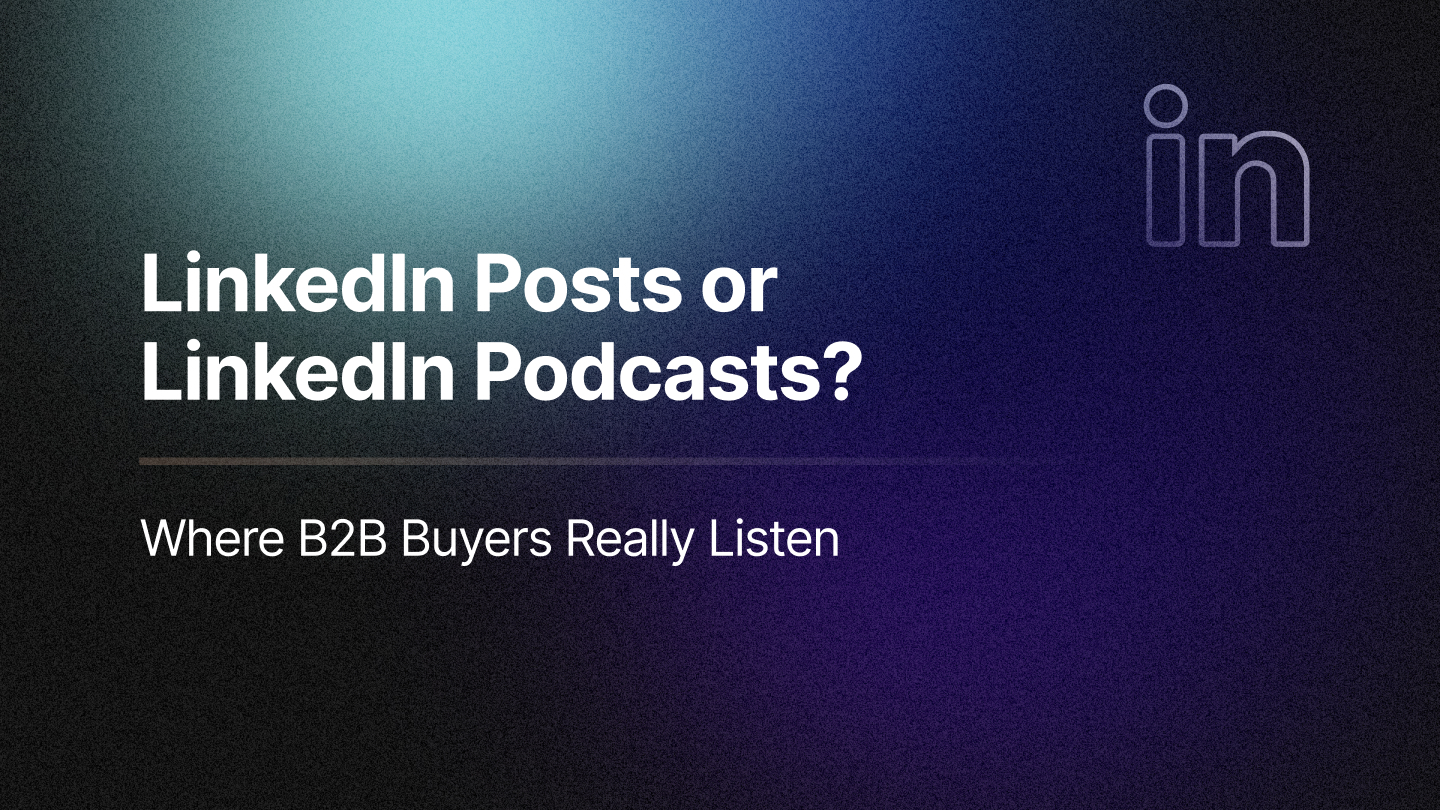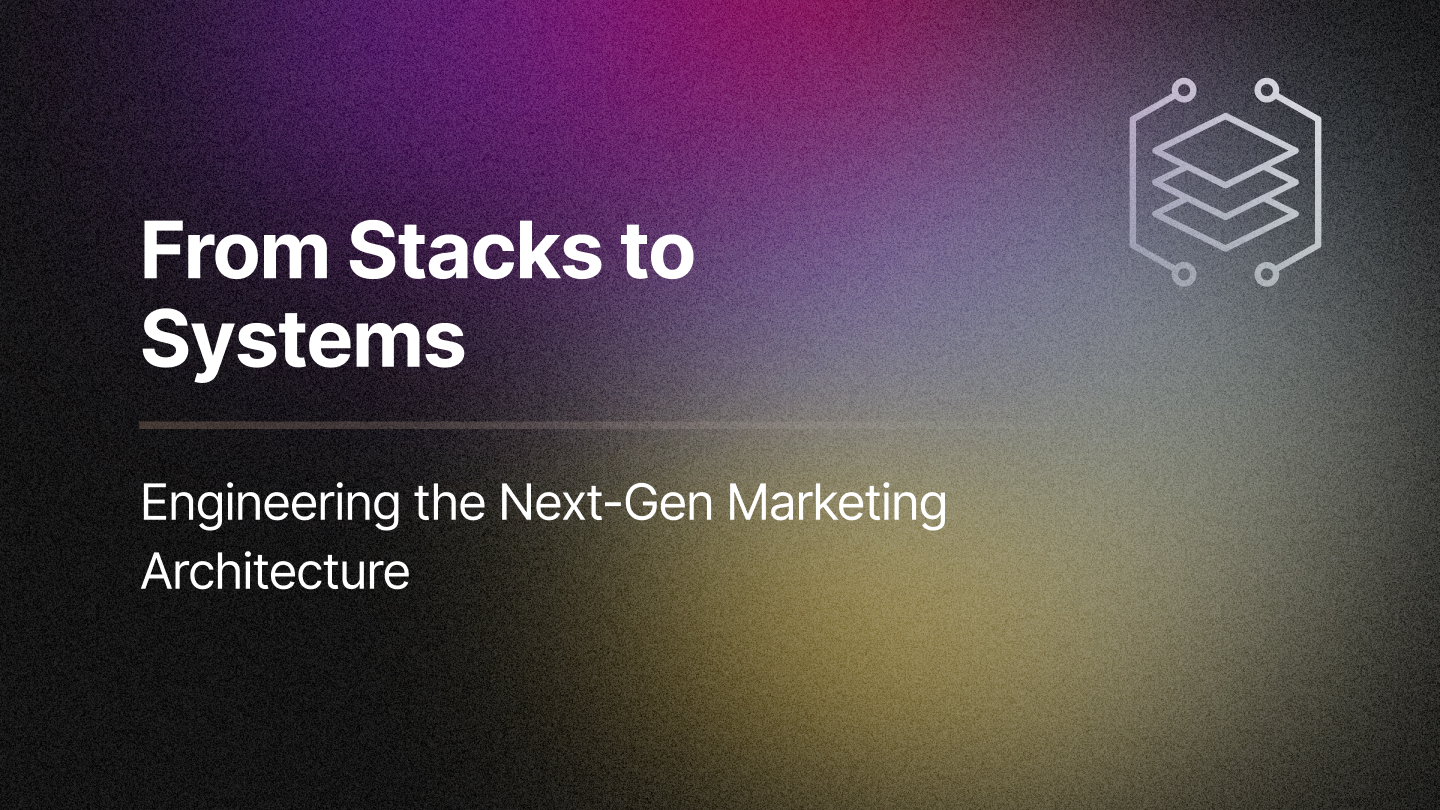Quick Feedback Loops: From Brain & Gut to GTM Funnels
Ever eaten so fast you felt sick minutes later? That’s your brain and gut missing the memo, because it takes about 20 minutes for your brain to register fullness. It’s a quick feedback loop, one that nutritionists swear by.
Why start here? Because your Go-to-Market (GTM) funnel needs the same kind of loop, especially between early-stage pipeline and demand gen. Without this, poor-fit leads fester in Stage 1, draining time and skewing metrics.
The Complex GTM Motion
You have demand gen creating awareness, SDRs qualifying, and AEs selling, all aiming for revenue. But buyers hop across too many channels: a webinar here, a Slack invite there, a whitepaper, a tweet. It leads to this: a flood of “interested” leads, unclear buyer behavior, and opportunities dumped into a Stage 1 parking lot, GTM’s equivalent of No Man’s Land. “Pipeline Parking Stage 1” is where leads wait for clarity. No one owns them. Marketing thinks it’s sales’ job; sales assumes they’re not ready. This is where revenue dies.
The Early Stage Pipeline Graveyard
The SDR’s job is to sift through noise, MQLs that may or may not be legit. But when:
- The ICP is outdated
- The lead volume is overwhelming
- Good deals are lost in bad data
…you end up with a graveyard where great opportunities die unseen.
This isn’t a rep problem. It’s a system failure. Especially when:
- Marketing’s campaigns evolve faster than your ICP definition
- Emerging personas (like InfoSec) are missed
- You rely on spreadsheets to detect these shifts
RevSure’s Buyer Intelligence reveals real-time shifts in personas, intent, and behavior, no more needles lost in haystacks.
The Root of the Problem
The early-stage pipeline is fuzzy. Later stages like Negotiation or POC have checklists. Early stages? They hinge on a single conversation. No checklist. No clear ownership.
And so:
- Misaligned handoffs persist
- ICPs change unannounced
- Campaign insights stay buried in decks
RevSure’s Funnel Analytics surfaces which leads actually convert by segment, campaign, and more.
4 Metrics Affected by Poor Early-Stage Pipeline
1. Deal Velocity: Reps waste time chasing the wrong leads.
2. Forecasting: Inflated early-stage pipe = misleading forecasts = missed targets.
3. Pipeline Coverage: Looks great on paper, but it’s bloated with low-quality opps.
4. Marketing Efficiency: Feedback doesn’t loop back fast enough to adjust ICPs.
RevSure’s Pipeline Projection & Health helps separate noise from signal, so what’s forecasted aligns with reality.
The Real Cost
At $198 per lead, B2B demand gen is already costly. But the bigger loss? Opportunity cost from missing good leads and failing to correct poor ones. Worse still? Not feeding real-time insights back to marketing. The whole GTM system, like your brain and gut, is interconnected. Without feedback, everything slows down.
According to LinkedIn’s State of Sales 2022, “No unified view of data” and “Siloed data” are two of the biggest challenges sellers face. RevSure connects your entire funnel, marketing to sales, top-of-funnel to bottom-line impact.
Let your reps focus on selling, not spreadsheets. Let marketing target what actually converts. Let RevSure do the stitching. Book a demo today!
Related Blogs








